It Ain’t Over T’ill the Black Widow Sings—A Greek Tragedy in Italy with a Splash of Commedia d’ell arte
A film review of Scott Ridley’s 2021 House of Gucci
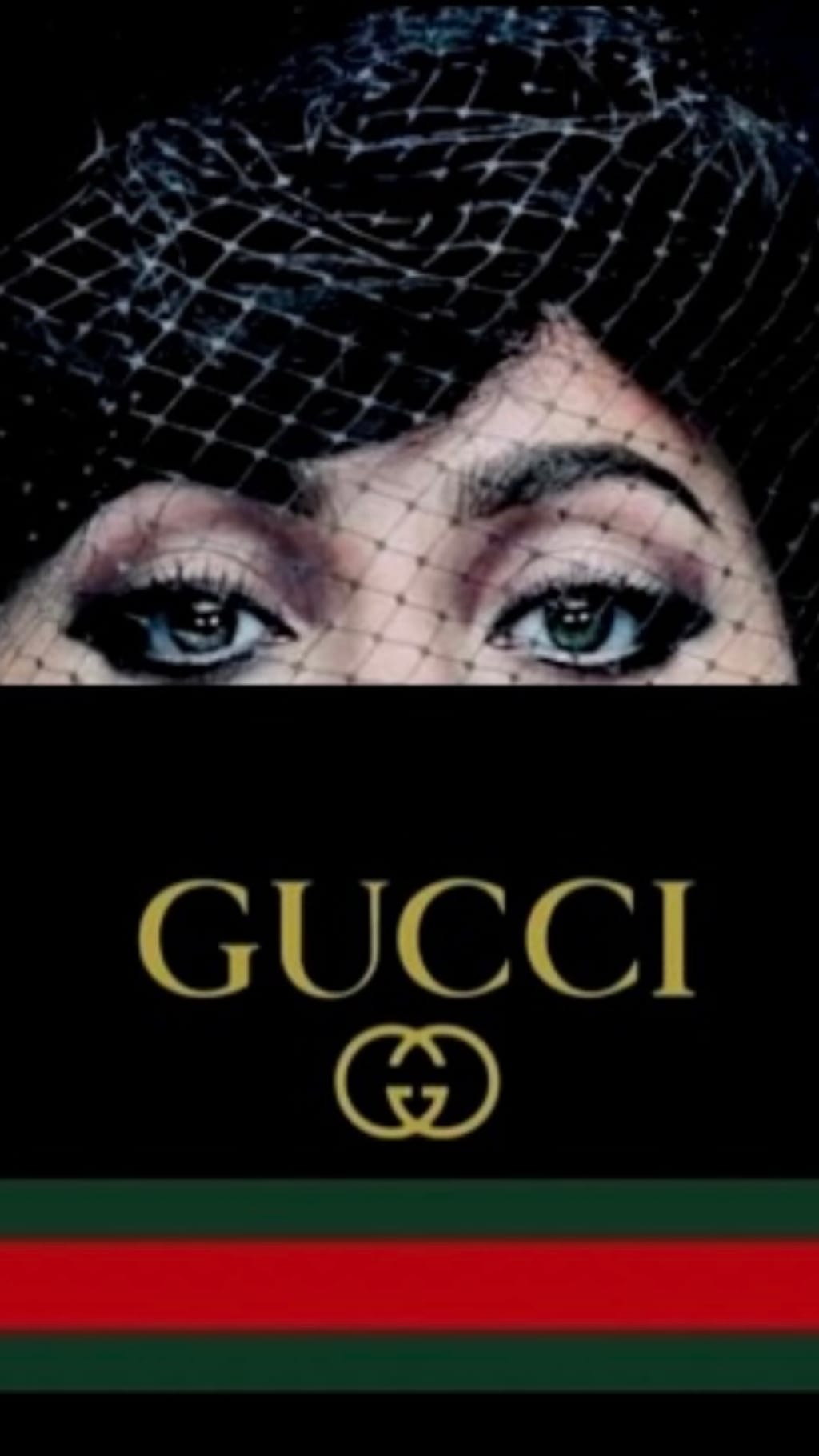
A stylish production all dressed to kill in vintage Gucci hot iron lapels and tempers, complimentary power suits and pin stripped scars of love and jealousy—a world adorned with decadence, betrayal, passion and ambition tells its story of a famed famiglia whose roots run deep—Six feet deep in this Crime Saga about the Gucci‘s cursed legacy.
Nostalgia is intoxicating
Fashion dominated the 1980’s, an Era of class structure, excess, opulence and laisser-faire capitalism. We accepted celebrites for their glamour and prestige —they were our mythological gods complete with vice and virtue. Who can deny fascination with “the lifestyles of the rich and famous” the Robin Leach libretto of 80’s Glam, the “Dynasty” and the “Falcon Crest” of power and romance, cat fights from the palladian Hollywood studios for the masses—it was a time of Soap Operas and we were its captive audience.
Out of his latest Cinematic Universe, Director Sir Ridley Scott (Alien, Blade Runner, Gladiator, Prometheus) takes us for ride in his Lamborghini Countach, to the Fashion Capital—first stop, Milan for the courtship of Maurizio Gucci and Patrizia Reggiani, then Rome for the nuptials of the next heirs of House of Gucci where we meet the gods intimately. Based on a biographical novel about the Gucci Empire by Sara Gay Forden‘s 2001 book “House of Gucci: A Sensational Story of Murder, Madness, Glamour, and Greed", the film highlights the complex predicament of a woman consumed by bitterness and sense of loyalty to the Gucci name inseparable from family, reveals the cracks in the foundation of family business empires and the deadly aftermath of unrequited love.
Background filming/ production
The trailer came out with a bang and promised the expected scale and spiritual dimensions associated with its prolific sci-fi director but it falls short of emotional gravitas, the final impact is closer to that of a made for T.V documentary. Timing is everything and as I wound back my mental watch from a 2021 release, House of Gucci was shooting in the red zone amidst a new round of Coronavirus lockdowns in Italy—a clear message: the show went on, we will go on.
The setting in Italy, no stranger to epidemics and plagues from the Antonine Plague of 165 to 180 AD up to the Black Death and Covid-19 is symbolic. Steps away from High Baroque Santa Maria in Campitelli Church in Rome where the Gucci wedding was filmed, stands the Temple of Apollo Sosianus, dedicated to Apollo Medicus (the healer) during the 433 BC plague. Moments before the wedding ceremony, heavy travertine framed portico doors open up to a radiant Icon of Santa Maria in Portico dating back to the 5th century. The faithful prayers of the people processing through the streets with this Icon is believed to have saved the city from the plague of 1556.
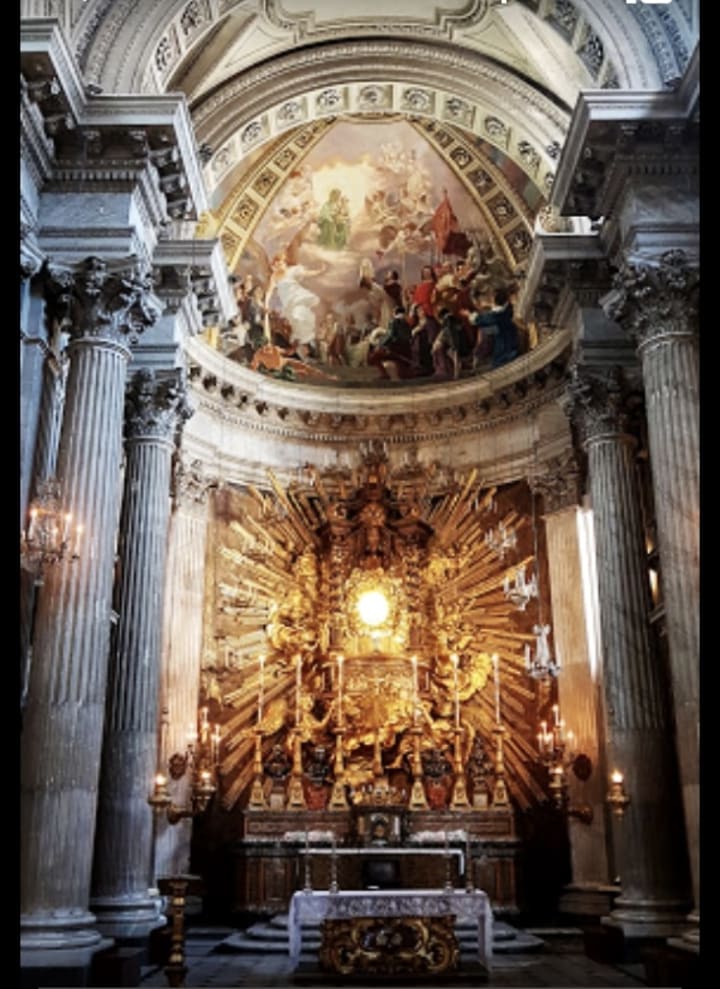
They say in the theatre that if you place a prop on a stage you better use it—everything has meaning and purpose and film-makers never spare a frame. The point of focus on this Icon is not accidental. Ridley’s lense fixes on the Church of Campitelli and what is left of the transcendent of our time like grand scale viewmaster reels of the sacred, a Catholicism back in Vogue and at that moment we realize that this movie is not about death and murder, but life: La Dolce Vita—a preservation of Culture. That angle of truth, goodness and beauty is often quietly hidden to a busy global frenetic world of dead-end technology. Behind the skene, the director drapes a deeper message about the difference between Wealth and Riches. Florence, the cultural center of Europe and cradle of Renaissance Art & Architecture and the Capital of Commerce and Fashion was an Icon that could never be reproduced.
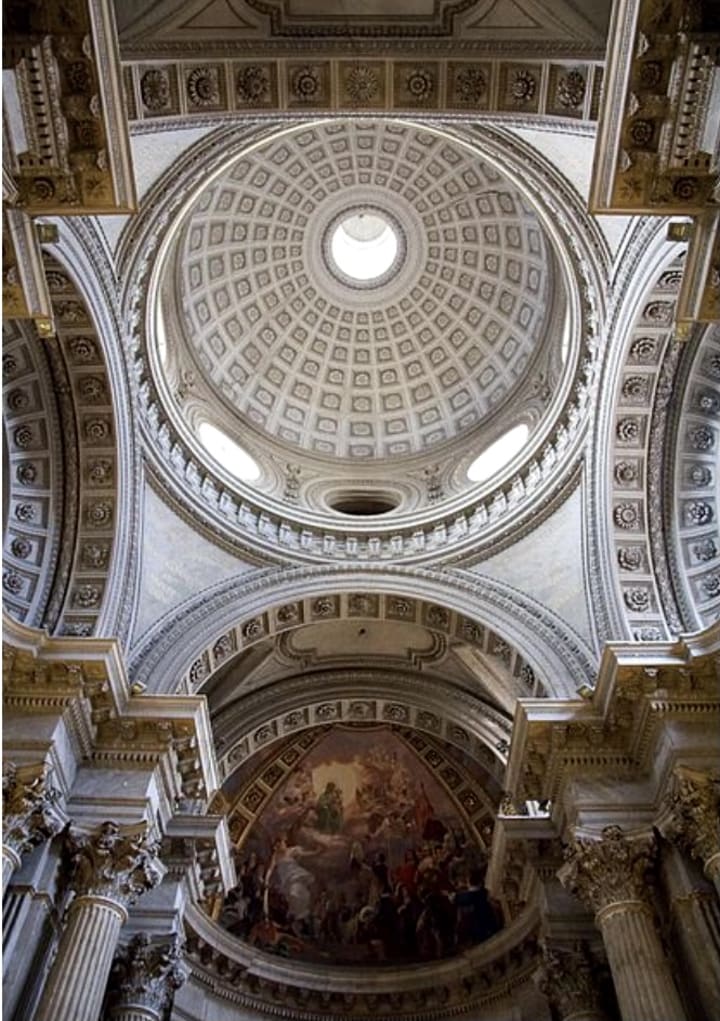
PROLOGUE
Sir Ridley Scott’s House of Gucci is a Greek Tragedy on a Roman film set with a side of Commedia dell' arte full of its own stock characters: the Patriarch, Dutiful Son, the Temptress, the Fool, the Fortune Teller, the rich Uncle and La Femme Fatale. Spoiler Alert: It’s funny too. We meet the first half of the chorus: Maurizio, Patrizia and Rudolpho (Maurizio’s father) in a series of wide shots in andante fashion echoing their courtship, Ridley‘s hat off to Fellini’s La Dolce Vita and Wyler’s Roman Holiday.
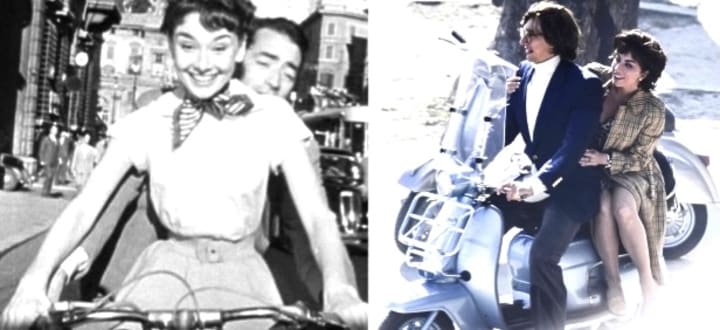
Lady Gaga who plays Patrizia Gucci proves she is an actor who can sing. No stranger to the craft, the songstress studied Stanislavsky technique and method acting for 10 years with Lee Strasburg long before her “Bad Romance”. She shows her acting muscle like a true thespian in her anthropomorphic transformation as Patrizia who changes from a young prancing fox to a famished black panther on the prowl by the end of the movie without it seeming over the top.

Her believability is in that she learned to love her character. Brrràvo! As for Italian accents, the only two entities that can pull that off are Italian natives and maybe Meryl Streep. Realism is not part of a Gucci world and for Hollywood‘s sake we are all willing to suspend our disbelief and settle for an Americanized Russian. That’s funny.
Meet the Dutiful Son
The only way for a Director to survive portraying real high profile people larger than life like the Gucci family is to present them as allegory, a device helpful to a director, disastrous for an actor who needs action and motivation. The result is that much of Maurizio is played to allegory, an idea, a model for Zegna men's suits. To his credit, Adam Driver had to work from a bare bones script and flesh out who Maurizio was. I don’t believe he was ever able to convince himself.
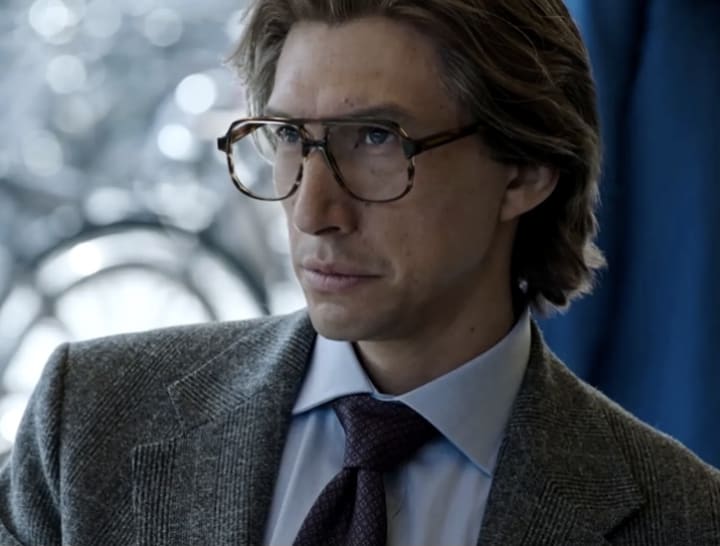
In the opening scenes, Maurizio is presented as Uncorrupted Wealth: elegant, upright, reserved, generous, modest "a rare animal that must be protected". Under a father's immunity, he rides his bicycle free of cares through Milanese terrazzo piazzas, dressed in woven grey suit jacket and trousers, and bicycle clips inches above the hem--underneath the understated appearance, noblesse oblige.
PARADOS
Meet Rudolpho (Demi-God, Patriarch)
Jeremy Irons (Rudolpho) plays Maurizio’s father and represents the old world of craftsmanship and refinement, Wealth vs Riches. It is hard not to see Jeremy Irons as the Englishman in full regalia: cravat, smoking jacket and monogrammed slippers and yet it works—the English import is fitting as his father (Guccio Gucci) a Savoy Hotel Bellboy immersed in London high society had produced a successful line of saddlery. Rudolpho, who is ailing still fortifies the past, sets and maintains the Gucci standard, taste—gusto—guccio—Gucci, and brand as Art. “Art as well as Beauty have no price” he says through the smoke of his cigar. But to his brother Aldo and the new generation of Gucci members, he is the old guard.
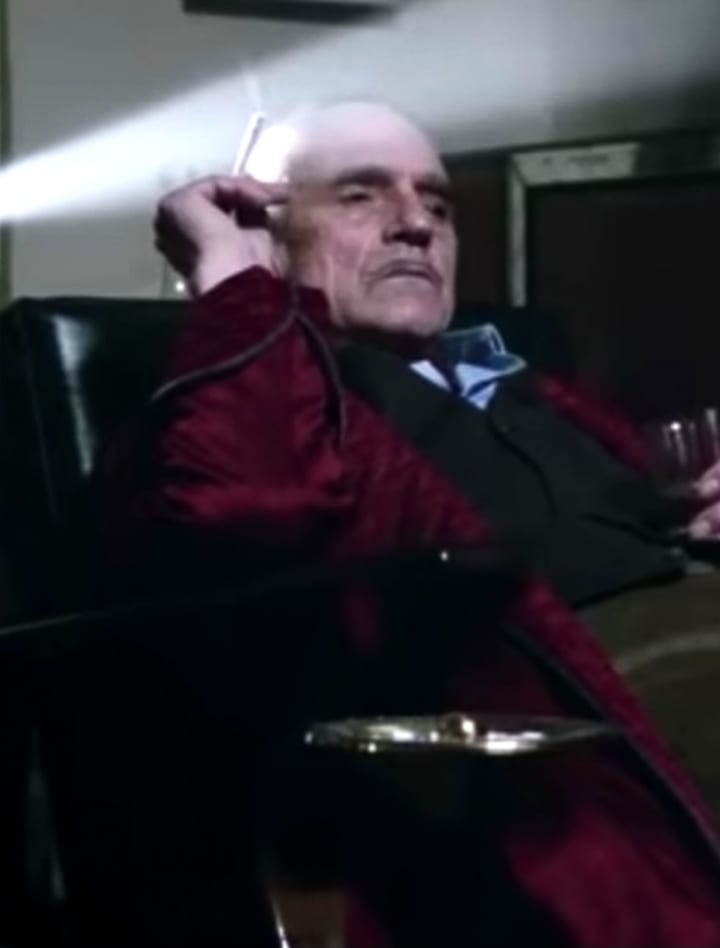
Once Patrizia is introduced into the Gucci family the chips begin to fall: Patrizia is black listed by Rudolpho as a gold digger, Maurizio is disowned then reconciled before his father’s death and left with an unsigned Will. The subsequent scenes deal with the power struggle of family members over the Gucci name and ownership of the company.
EPISODE:
Meet the Rich Uncle
Aldo’s entrance is grand as expected as the Chairman son of Gucci, Ambassador of Fashion (JFK). He changes the entire business direction of Gucci, one of expansion and mass production for Hollywood Glamour and American diplomats. Aldo (Rudolpho’s brother) represents Wealth’s counterfit Riches. His arrival is preceded by lavish 16th and 17th century palazzo's, loggias, and garden terraces. The vista’s are breath taking, statuesque roman pines punctuate and crystal blues of Como invigorate:

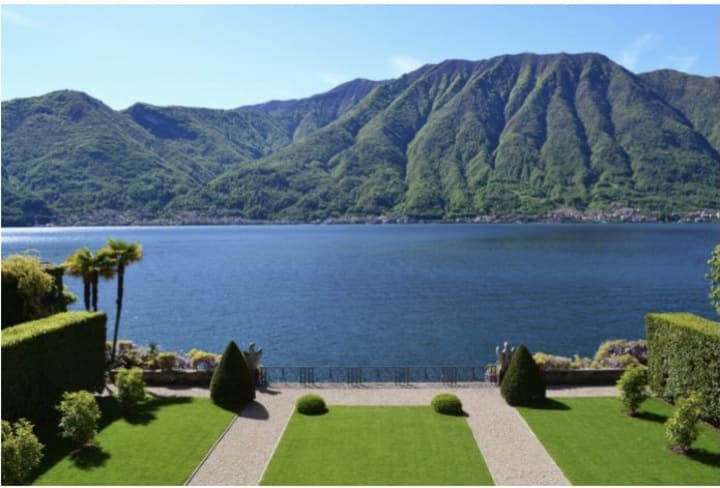
Just when you thought Al Pacino couldn’t outplay himself, he moves gracefully, no need for the pulsing of temples (Scarface) no deadly Corleone gaze (The GodFather) or calculated ‘Hoo-ah’s! (Scent of a woman), his entire performance is a dance. Pacino whose character owns 50% of Gucci shares, also owns 50% of the film’s energy, his performance is the rudder of the film. Al pacino fits like a good leather glove, a warmth and wisdom only attainable with age, he’s a MacCallan 18 with a splash of water at room temperature. His preparation routine is so innate we get the impression he’s been wandering as Aldo on set before Sir Ridley Scott even accepted the film.

Aldo sets his eyes on Manhattan, and persuades Maurizio and Patrizia to work for him. It is on Canal street that Patrizia discovers the knock-off Gucci bags and we see in Patrizia a mission in the Gucci line and an insight into a woman’s heart: she wants real love—not a replica.
Machismo Patriarchy in full display poses comfortably throughout the film in context, as Ridley comedically and cleverly angles the equally primadonna Patrizia at the end of Al Pacino’s line “this game is not for a girl, remember that”. She ignites a cigarette. Silence. The clip of a zippo: There will be no cancellling today. Al Pacino and Lady Gaga play off eachother like pros and when Pacino plays his King card, Lady Gaga slips him the Ace.
Meet the Fool
Jerod Leto who plays Paolo (Aldo’s son) rises to the occasion and works his melodrama in mannerism and grandiose emotion. He is the Commedia dell’arte relief, believable as an aspiring artist and convincing in the sympathetic role of Paolo who sees himself as a bird of paradise trapped in a pigeons body as he says in self irony “I want to soar like a pigeon!” As we know, pigeons do not soar and are highly reproductive—a foreshadow of mass production. Unable to meet the approval of Rudolpho for his designs, he is a caged bird in the Gucci Garden unable to soar under his fathers’ shadow and we feel for his plight as a mourning dove.
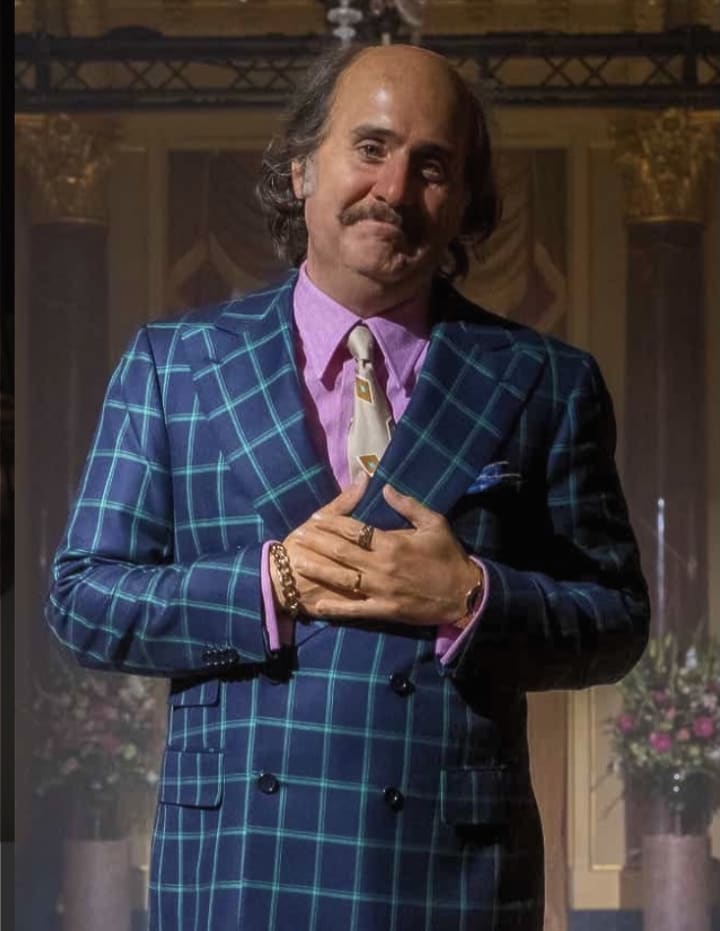
The evocative soundtrack takes us through the decades 70’s, 80’s, 90’s and accompanies each character distinctly. Paolo’s swan song from the Magic Flute’s Queen of the Night takes us to another level but the beauty of Italy and its architectonics are the surround sound.
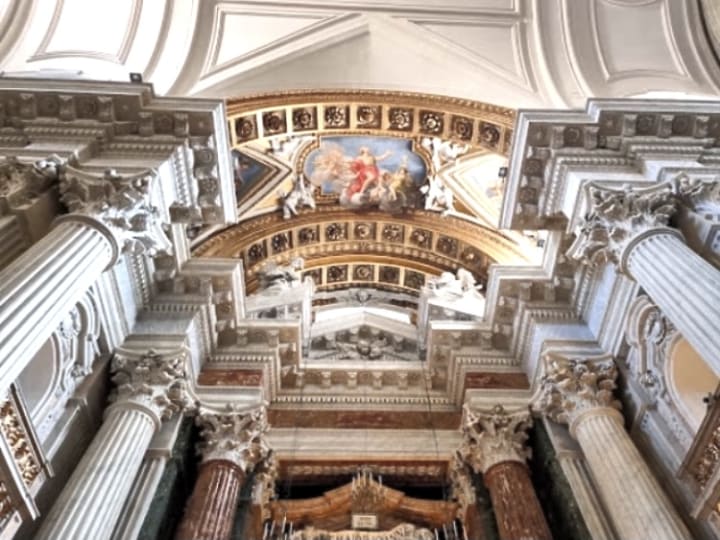
Meet the Fortune Teller
As the family web entangles, legal battles ensue and the marriage between Patrizia and Maurizio falls apart. Maurizia has an affair with Paola Franchi played by Camille Cottin, a calculating performance she appears like an Eurasion snow Lynx in the Alps awaiting her next prey.
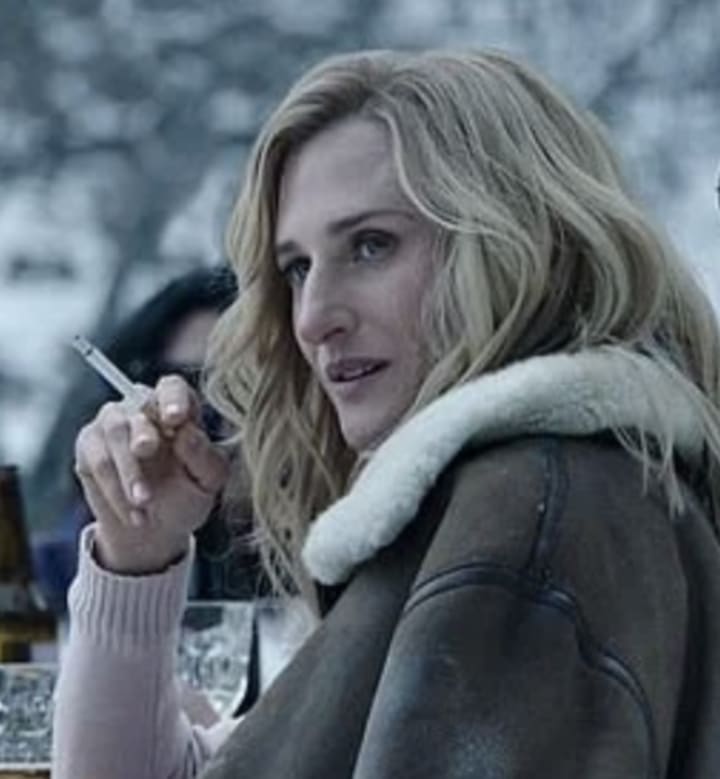
Patrizia finds solace and a female bond in Pina, a psychic played by Salma Hayek. The scenes between Patrizia (Lady Gaga) and Pina (Salma Hayek) are mesmerizing. In a mud bath scene they are goddesses plotting against the men. This is where Ridley Scott succeeds in elevating our minds beyond the cheap deception of television psychics, a darkness that Patricia was enveloped in. Always using a fine arts lense shrouded in amber lighting, it is the scene of a symposium of revenge on a Greek vase between Megaera, goddess of Jealousy and Minerva, the goddess of Wisdom and War.
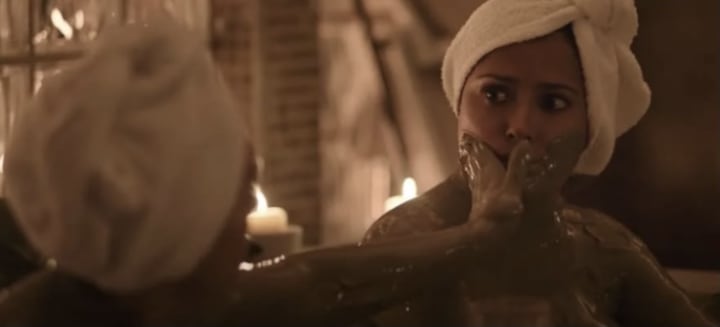
STASIMON
The final chorus of the action of the film involves lawsuits, tax evasion, raides, backstabbing and Gucci changing hands by forced signatures. It is the turning of tables in the temple. Aldo is pushed out by Maurizio in a wrenching scene and signs off his life’s work—his inheritance.
In the final scenes before his murder, Maurizio has his Last Supper, a prime cut scallopine carpaccio from the Vatican. He sits before wolves of the marketplace/commerce as a lamb before the slaughter in a den of robbers. We see the contrast in his character from the beginning of the film as he leaves a generous tip, to the last scene when he sells out his own Gucci shares to InvestCorp and pockets the tip. He takes his 30 shekels, he is both the sacrificial lamb and Judas.
EXODUS:
The biggest dissapointment follows in the last scene after Maurizio is shot on the steps of his office building. Tracy Chapman's folksy song “sorry” is out of place and takes away the graveness of the deed. The denouement would have been better served without music, only the echo of the cold marble floor, the Judge and the Gavel to seal Patricia’s fate standing at the judgment her parádeisos turned to tragos (tragedy) song.
Overall the film exudes life before a pandemic, it has oxygen, a welcome chemical in a masked paradigm and after a 2 year stint of Covid-19, our modern day plague, House of Gucci gives us new vistas to breathe. Ridley ”throws open the windows” (Pope John XXIII) to let the fresh air in. He, like Rudolpho’s House of Gucci, resets the standard for film and the new humanism. A mastermind and engineer in commercial genre serves Ridley Scott well in this sweeping Italianate tragicomedy—Between the cinematic landscape of the Italian Alps, from Rome to Milan and Ridley Scott’s painterly eye, a treasure trove of sleek scenes reminiscent of 1940’s-1950’s American Film Noir, shadows of Citizen Cane and frames of high fashion photography flash over us an indelible image of power and luxury.
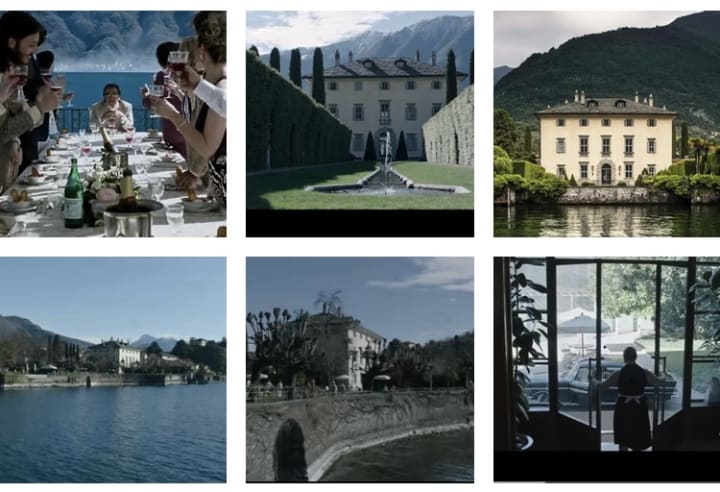
it makes the CGI trend seem oddly out of fashion:

Directors like Ridley Scott and Tarkovski are the Philosopher Kings of film-making. They lift us out of the shadows of Plato’s Cave by manipulating light—they have to lie in order to tell the truth. If there is any director best fit to light the runway back from the dead of a Pandemic, it‘s Sir Ridley Scott. We will leave the shadows behind and head back to the silver screen.
FINI
About the Director:
Sir Ridley Scott, no film school protégé, earned his film cred through Commercial production and set building for the BBC. His training from the Royal College of Arts in both Fine Art and Graphic Design has produced memorable canvases on film, the use of light his greatest ally.
About the Creator
Regina Campbell
Independent writer/ essayist
Alias: Julia Caesar
Connecting history and philosophical ideas through the ages in the pursuit of our common Culture.
https://woodbine89.wixsite.com/schola



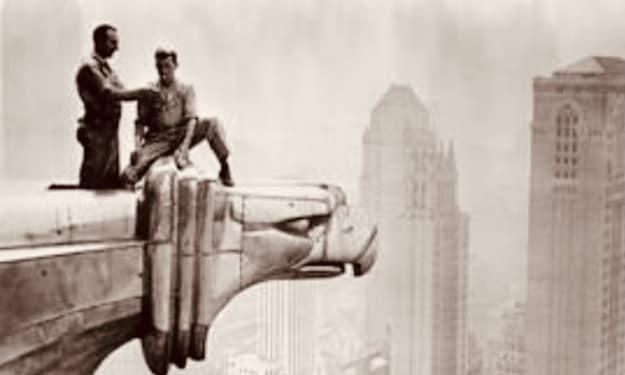



Comments
There are no comments for this story
Be the first to respond and start the conversation.